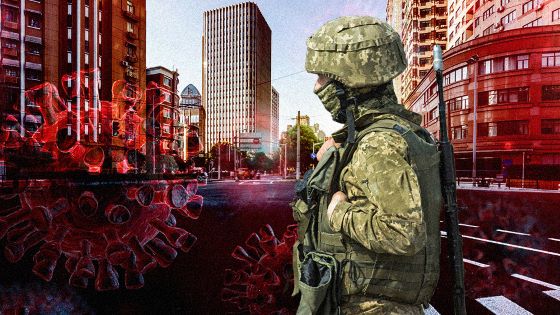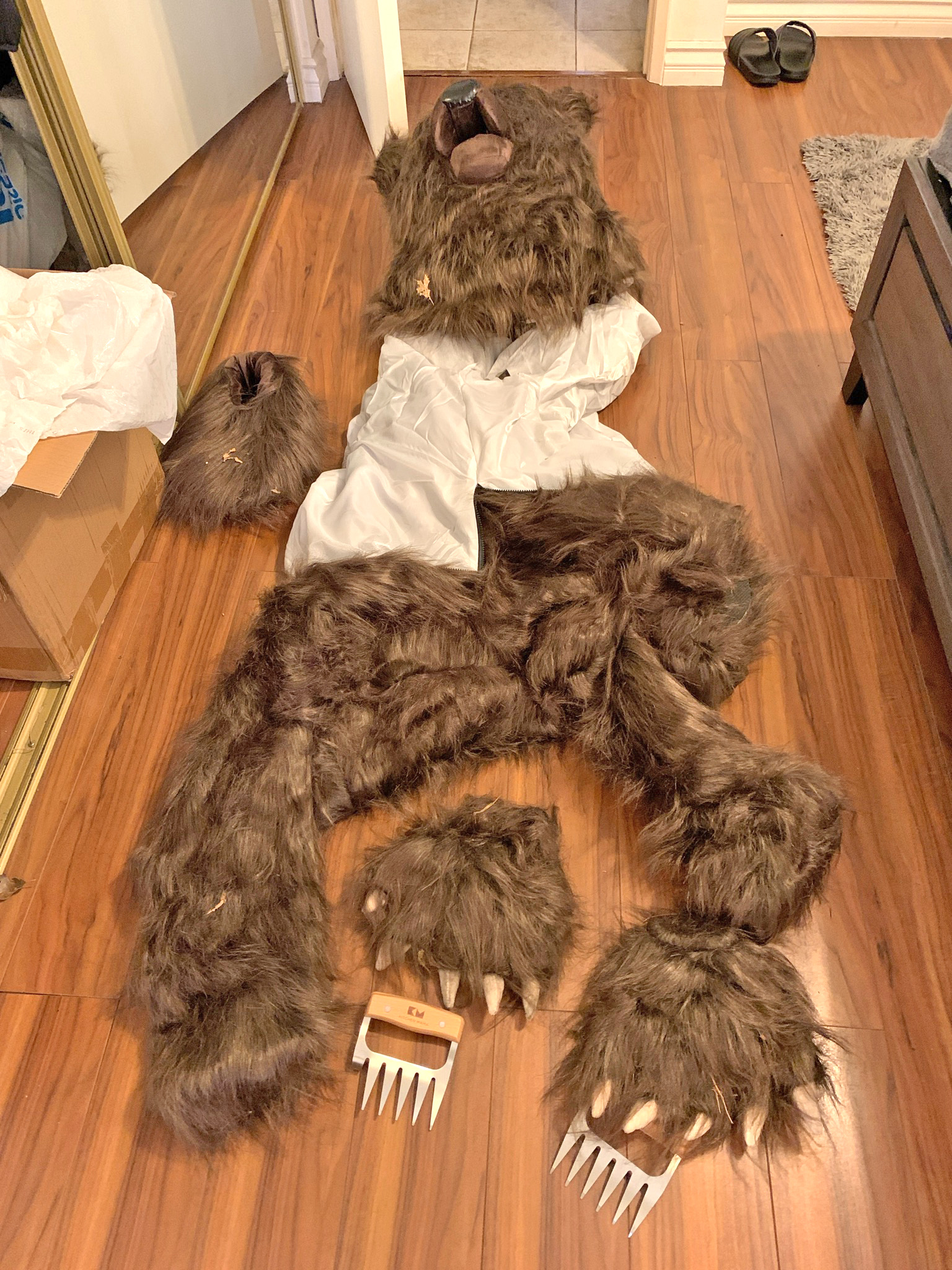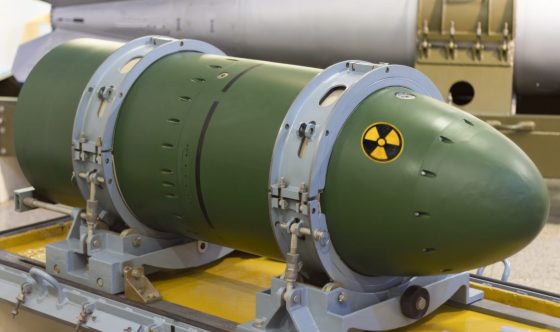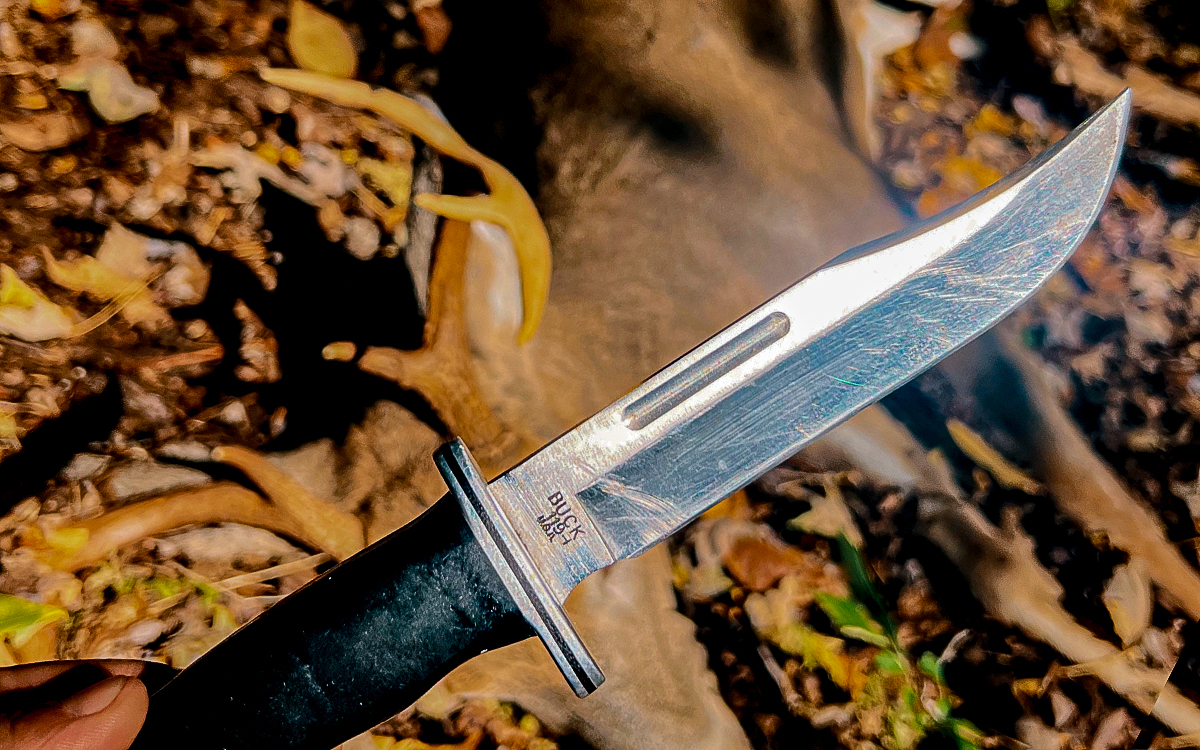The Best Base Layers for Hunting of 2024, Tested and Reviewed

We may earn revenue from the products available on this page and participate in affiliate programs. Learn More ›
Hunters frequently face biting winds, bitter cold, and sudden downpours because filling tags from a warm, dry living room just isn’t going to happen. While camo patterns and high-performance outerwear tend to get all the glory, the base layer is the real hero of hunting apparel. Whether sitting still for hours in a deer stand or hiking miles through rugged backcountry terrain, a good base layer will reduce discomfort and help you stay focused on the hunt.
With a vast array of brands, materials, and designs to choose from, tracking down the perfect layers can feel harder than tracking down a target buck. To find the best base layers for hunting, I tested top contenders from major brands and relative newcomers to see which ones perform and which fall short of the marketing hype. These top picks will keep you comfortable, dry, and ready for whatever weather Mother Nature tosses your way.
How I Tested the Best Base Layers for Hunting
For my initial hunting base layer testing, I considered several essential criteria: comfort, durability, moisture management, and thermal regulation. I also looked at whether the garments had any hard-to-follow special care instructions. After an extra-hard hunt, I toss everything straight into the washer and close the lid. Since I rarely read a care label on wash day, anything that needs delicate treatment probably won’t last long in my closet.
Before hitting the woods, I wore each base layer for a short workout that included six sets of alternating step-ups and kettlebell farmer’s carry. I performed each exercise in a 67-degree gym as a back-to-back super set, with a 2-minute rest between five total sets. I observed how quickly I heated up and how sweaty I felt after completing the 22-minute workout. Since deer hunting often involves hours of sitting still, I also wore each base layer for two hours while working behind a keyboard.
I gave each one a comfort score based on how it felt against the skin during active movement and inactive periods. Items were rated on a scale of one to 5, with one being the equal of wearing a cactus coat and five being silk pajamas. I have relatively sensitive skin, so my comfort grades are admittedly on the critical side.
No matter what torture test you put yourself and a base layer through at home, the real test is always how they perform in the field. It’s the only way to assess comfort and performance accurately. I’ve spent considerable time in a treestand, duck blind, or hiking the backcountry with most of the pieces on this list. They have proven their worth several times over.
The Best Base Layers for Hunting: Reviews and Recommendations
Best Overall: Sitka Core Merino 330
See It
Key Features
- Fabric: ArmorSpun merino wool; recycled synthetic interior
- Sizes: Women’s S through XL; Men’s M through 3XL
- Comfort Score: 4
- Weight: 330 GSM
- Price: $139 (bottom), $159 (zip-off bottom); $219 (half-zip top), $249 (hoodie), $49 (gloves), $40 (beanie), $159 (leggings)
Pros
- Anti-itch, moisture-wicking lining
- Warm without being bulky
- Versatile pieces
- Easy care merino can be washed with regular hunting clothes
Cons
Sitka’s Core Merino 330 base layer was engineered for hunting when the forecast is extra frigid. The Merino 330 is the brand’s warmest-weight merino, but the pieces don’t feel extra bulky. They also do a fine job of thermo-regulating, so when Mother Nature’s mood swings from frosty in the morning to sunshiny warmth in the afternoon, you won’t feel like you’re trapped in a base-layer sauna.
Sitka’s brilliant engineers cut the merino itch factor on these heavyweight pieces by adding a recycled synthetic interior. Not only is it super comfy against the skin, but it also helps move moisture away from it to keep you comfortably dry.
Despite its heavy weight, this base layer performed surprisingly well during my workout. I was warm but didn’t feel like I was going to suffocate, and while I knew I was sweating like a pig in a butcher shop, I didn’t feel at all soggy when it was over.
Sitka also scores major brownie points in my book by taking the headache out of laundry day. Core Merino 330 items can be washed and dried with all your regular hunting clothes — no sorting, handwashing, or line-drying required.
The Core Merino 330 hoodie is one of my all-time favorite pieces. I’ve worn it as an outer layer, a mid-layer, and all by itself. I love it in every position. It also has cool integrated features like a breathable merino face mask, a super-soft, low-profile hand warmer pocket, and a zippered chest pocket perfect for stowing my license, lip balm, or turkey calls.
Best Synthetic: Forloh Deep Space
See It
Key Features
- Fabric: 87 percent polyester, 13 percent Spandex
- Sizes: Men’s S through 3XL; Women’s XS through XL; Youth XS through L
- Comfort Score: 4.5
- Anti-microbial Polygiene tech
- Odor Crunch scent-free tech
- Made in the USA
- Lifetime warranty
- Price: $79 (bottom), $79 (top), $129 (1/2 zip top)
Pros
- Super comfortable
- Lightweight
- 50+ UPF
- Available in women’s and youth sizes
Cons
Deep Space synthetic layers combine Polygiene Odor Crunch and Stay Fresh technologies, which work together to fight funk-causing bacteria and outside odors. This makes it well-suited for active, multi-day backcountry hunts.
These layers are hands-down the most comfortable I tested. They have a silky smooth texture with an almost cool feeling next to your skin. Despite the cool-to-the-touch feeling, they do a fabulous job in cold weather. Deep Space fabric features Trizar heating technology, which uses natural minerals and space-age ceramics to spread and re-radiate body heat. NASA developed the tech to protect spacecraft that are reentering the atmosphere. This was my go-to layer during last year’s late deer season when the mercury plunged below freezing. I can attest to its ability to keep me warm and cozy in a frigid treestand. What surprised me, however, was how well the technology prevented overheating during my gym workout. I never felt close to overheating. The material also kept me comfortably dry, even when I knew I was exerting myself enough to work up a good sweat.
The results of the workout test inspired me to wear Forloh’s Deep Space top on an early September archery hunt in North Carolina, where lunchtime temperatures reached well into the 80s. I felt comfortably cool during the morning sit. I did get caught in an afternoon downpour without rain gear, which left me completely drenched. The layer’s fast-drying capabilities got a major chance to flex on my hike out. It was bone dry before I ever reached the truck.
Best for Cold Weather: First Lite Furnace
See It
Key Features
- Fabric: 95 percent merino wool, 5 percent Spandex
- Sizes: Men’s S through 3XL; Women’s XS through XL
- Weight: 350 GPM
- Comfort Score: 3.5
- Price: $110 (bottom), $160 (1/4-zip), $190 (hoodie), $35 (beanie)
Pros
- Very warm
- Provides excellent freedom of movement
- Easy to launder
Cons
- Pricey
- Slight itchiness
- Thickness can make layering tricky
First Lite didn’t name this base layer “Furnace” for nothing. Things get toasty fast in these heavyweight merino pieces, which contain just enough Spandex to give the wool some snug-fitting stretch. Of all the layers I tested, these seemed the warmest. Making it through the workout without overheating didn’t happen, and I got sweaty almost immediately. I quit three sets in. However, even after the hoodie sat in my gym bag next to some stinky socks for over a day, my nose couldn’t detect any stench.
The high wool content creates some mild itchiness when worn next to the skin. However, the flat seams don’t rub, and the slight stretchiness of the fabric makes these pieces easy to move around in, especially on the step-ups I finished before throwing in the towel.
At 350 GPM, Furnace base layers are relatively thick. The hoodie feels super-cozy as an outer layer, but it’s a chunker. You’ll need extra room in your outer layer to accommodate it. However, warmer layers usually equal fewer layers so you can get away with just the Furnace and a wind-cutting insulated jacket for all but the chilliest hunts. This is the base layer I’ll be wearing this season on those long, cold, late December treestand sits this season.
Best Budget: Born Primitive Ridgeline
See It
Key Features
- Fabric: 50 percent merino wool, 50 percent polyester
- Sizes: Men’s S through 3XL; Women’s XS through XXL
- Weight: 150 GSM
- Comfort Score: 3.5
- Price: $79 (men’s bottom), $69 (women’s bottom), $79 (top), $55 (balaclava)
Pros
- Affordable
- Soft, flocked interior with minimal itch
- Durable
Cons
Born Primitive is a relative newcomer to the outdoor sphere. The company got its start with a Crossfit line in 2014 and entered the outdoor apparel market in September 2023. With the brand’s background in athletic wear, it’s not surprising that its layering system works well for super-active hunting situations.
The Ridgeline base layer is made from a 50/50 blend of merino wool and polyester, so it has all the anti-microbial and insulating abilities of wool with all the comfort and moisture-wicking properties of a synthetic. Although the armpit area was pretty wet after my workout, the top dried fast and didn’t leave any noticeable stink behind.
Ridgeline base layers also have a brushed backing that feels much softer against the skin than most merino wool. It’s soft and comfortable without the stereotypical pricklies that give wool a bad name. It also features flat seams, so there’s almost zero rubbing, even during vigorous movement. The top is a bit snug around my biceps, so if you’re on the buffer side, you may want to size up.
Born primitive recommends air-drying its Ridgeline base layers, but it survived a trip through my dryer on a low setting without any shrinkage or deformation.
Best Thermal: Thermowave Merino Xtreme
See It
Key Features
- Fabric: 100 percent polyester inside; 80 percent merino wool, 20 percent polyamide outside
- Sizes: Women’s XS through XXL; Men’s
- Weight: 220 GSM
- Comfort Score: 4
- Price: $75 (bottom); $80 (top), $90 (half-zip and turtleneck)
Pros
- Comfortably soft interior
- Great for cold weather
Cons
- Special care instructions
- Gets smelly after multiple wears
Thermowave Merino Xtreme had the softest against-the-skin feel of any of the wool layers I tested. That’s because it is made with a 100 percent polyester interior to cut the standard wool itchiness. The dual-layer construction enhances the garment’s moisture-wicking ability while maintaining the antibacterial properties of merino.
This is one seriously warm base layer. During the test workout, I had to pause because I felt too hot, but the garments did an excellent job of wicking moisture away from the skin.
I wore this base layer for a good portion of last deer season, and I consider it one of the most comfortable base layers I’ve ever worn. Despite its high wool content, It developed a bit of armpit funk after several trips into the woods. I also lost my bottoms to the dryer when they got tossed in with my hunting pants. The pants ended up too stretched out to wear. Care instructions recommend washing them on a wool cycle. They must also be pulled into shape when wet and air-dried out of the sun.
Best Merino Wool: Artilect Systems Boulder 125
See It
Key Features
- Fabric: 85 percent merino wool, 15 percent nylon
- Sizes: Women’s XS through XL; Men’s XS through XXL
- Comfort Score: 3.5
- Weight: 126 GSM
- Price: $110 (short-sleeve T), $120 (long-sleeve crew), $130 (1/4-zip top), $120 (legging), $110 (3/4 legging)
Pros
- Durable
- Stretchy and comfortable
- Breathable built-in panels
Cons
- Expensive
- Not dryer-friendly
Using a Nuyarn blend of merino wool and nylon, Artilect built a stretchy, lightweight, comfortable base layer. Nuyarn is manufactured by spinning fine merino wool around a nylon core. The result is lighter, stronger, and dries faster than traditional merino wool. It also has a much smoother, non-prickly feel than 100 percent merino.
Artilect also features special eyelet grids in strategic, high-sweat areas like under the armpits and in the crotch area to increase breathability. These breathable panels seemed to help keep me dry during the workout test, and while I did sweat a considerable bit, my pits remained mostly dry. The extra ventilation also helped keep me from feeling overly hot, which made the 22 minute exercise feel somewhat less intense.
Nuyarn needs a little babying on wash day. It needs to be washed inside out on a delicate wash setting. Machine drying is a definite no. These layers need to be line-dried in the shade. On the upside, the fabric air-dries like a speed demon.
Best for Warm Weather: Kuiu Peloton 118
See It
Key Features
- Fabric: Toray Primeflex knit polyester
- Sizes: Men’s S through 3XL
- 118 GSM
- Comfort Score: 4
- Price: $89 (zip-off bottom), $69 (short-sleeve T), $79 (long-sleeve T), $79 (half-zip T)
Pros
- Durable
- Easy to wash
- UPF 50+ sun protection
- Smooth, comfortable feel
Cons
- Not available in women’s sizes
Kuiu designed their ultra-lightweight synthetic Peloton base layer for active hunts in warmer weather. Made from Toray Primeflex knit polyester, these base layer pieces are plenty durable and have just enough stretch to make them comfortable. Primeflex is unlike most synthetics that weave in elastane or Spandex for stretch. Most conventional stretchy fibers hold moisture, add weight to the garment, and lose their stretchiness over time. Instead, Primeflex uses the magic of science to bond two different polymers into a single strand. The result is a super durable fabric that dries fast, offers plenty of stretch, and maintains its integrity through repeated washing.
Primeflex is also silky soft. It feels nice against the skin, and I could totally wear these base layers as pajamas. After an extended wear, one of the seams started to rub the inside of my arm, but it wasn’t annoying enough to be a dealbreaker.
The Peloton 118 crew top proved its mettle during my workout test. It kept me relatively cool through the step-ups and farmer’s carry and did a perfect job of wicking away sweat. In the end, even the armpit area was desert dry, and since Kuiu’s design wizards were smart enough to include Makspec odor-resistant technology into Peloton’s hydrophobic fabric, it didn’t develop any human reek.
The line also includes zip-off bottoms that feature a tear-off waistband and full-zip legs so you can strip out of your base layer without taking your pants off. Honestly, this is a feature every base layer should have.
One of my favorite things about the Peloton 118 base layer is that it doesn’t need gentle, loving care on wash day. Throw them in a washer with your favorite laundry detergent on any old setting then transfer them to the dryer. The care instructions recommend drying Peloton garments on low, but I tossed it in on high heat, and it came out without any noticeable changes in shape or color. While I wouldn’t suggest drying it this way routinely, if you accidentally forget to reset the dryer, it isn’t going to destroy your base layer.
Things to Consider Before Buying a Base Layer for Hunting
Merino Wool vs Synthetics
The fabric of your base layer directly affects how comfortable you stay in the field. The best base layers are usually made of merino wool or synthetic materials like polyester. Most hunters opt for base layers made from merino wool because it is soft, dries fast, and retains its insulating properties even when wet. Merino wool is also naturally antimicrobial, which means it will help fight the human funk game animals hate.
Wool has its drawbacks, however. Merino wool garments are expensive. Also, while wool has come a long way from the scratchy, prickle-fest garments that Grandpa wore, some hunters still find modern merino wool makes them itchy. This can be a major issue for people with sensitive skin.
There are also some great synthetic base layers for hunting. Synthetic materials, like polyester and nylon, dry much faster than wool. They also do a great job of wicking moisture away from the skin, which makes them an excellent option for high-activity or hot-weather hunts. Synthetic fabrics tend to retain odors. However, many modern synthetics are made with anti-odor treatments like Polygiene, which makes them far less smelly than old-school polyester. Synthetic base layers are typically less expensive than merino wool. They also have a smoother, silkier texture, making them more pleasant to wear directly against your skin.
Moisture Management
A base layer’s primary job isn’t really insulation. It’s managing moisture. Quality layers will efficiently and effectively move sweat and moisture away from the body. Moisture trapped next to the skin can be dangerous in cold weather because water conducts heat far faster than air. A body covered in a wet, sweaty base layer will shed heat faster than a golden retriever sheds hair on a living room carpet, potentially sending you into hypothermic shock.
Weight
Discussions of base layer weight don’t refer to the overall weight of a garment. Instead, “weight” refers to the heaviness of the fabric used to make the apparel. GSM stands for grams per square meter. The higher a fabric’s GSM, the thicker it will likely be. However, because GSM measures weight, sometimes fabrics that have the same GSM will not be the same thickness because one may have denser fibers than the other.
Heavier fabrics are generally warmer, so choose a base layer with high GSM for colder weather. Lighter weight base layers work best in warm temperatures.
Fit
Finding a base layer with a proper fit is vital for comfort and freedom of movement. It’s also essential to staying warm and dry. A layer that hangs too loosely won’t effectively wick sweaty moisture away from the skin. Essentially, your next-to-skin layer needs to be truly next to your skin. Look for a form-fitting base layer that hugs the body without restricting movement.
Special Features
The best base layers for hunting often have cool added features like hoods, built-in face masks, and side zip panels that make it easy to strip out of the layer without removing your hunting boots.
FAQs
A base layer should fit snugly without being too restrictive. A tighter fit traps a layer of warm air against your body, keeping you warm in cold temperatures. It also helps wick moisture from sweat away from your body.
A base layer is any layer that is worn next to the skin. Base Layers are designed to thermoregulate, which could mean helping keep you cool in warm weather or helping trap body heat to keep you comfortable in frigid conditions. Thermals can be worn as a base layer or standalone garments designed for insulation in cold weather.
Hunting base layers don’t have to be expensive. I’ve bought bargain-price $15 sets, worn them into the woods, and suffered through hours of absolute torture. I’ve also worn high-end layers that cost me a couple of Benjamins. Like with most things in life, when it comes to base layers, you generally get what you pay for. Springing for a high-quality set will pay dividends in the field. Quality base layers for hunting fall usually cost between $80 and $120 range for each piece.
Final Thoughts on The Best Base Layers for Hunting
A base layer is more than simple clothing. It also provides the first line of defense against tough environmental conditions. Whether you’re trying to sit still in a cold, snowy treestand or slogging through hot, rocky terrain, the suitable base layer can do the hard work of keeping you comfortable to stay focused on the hunt.
Read the full article here







